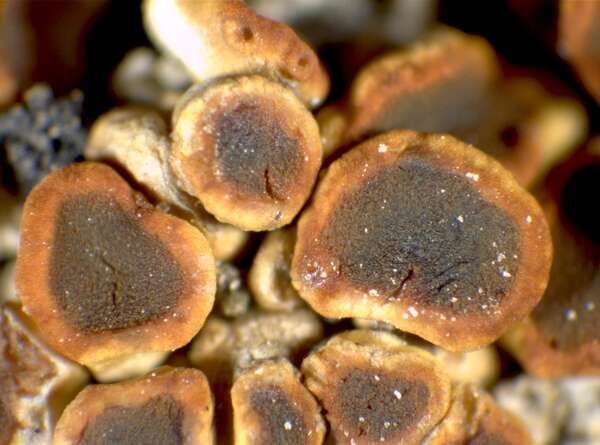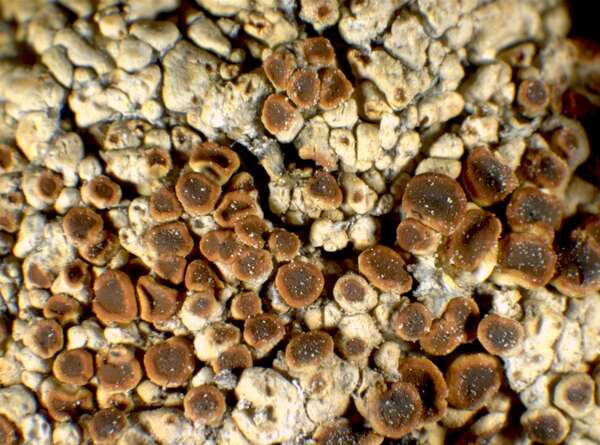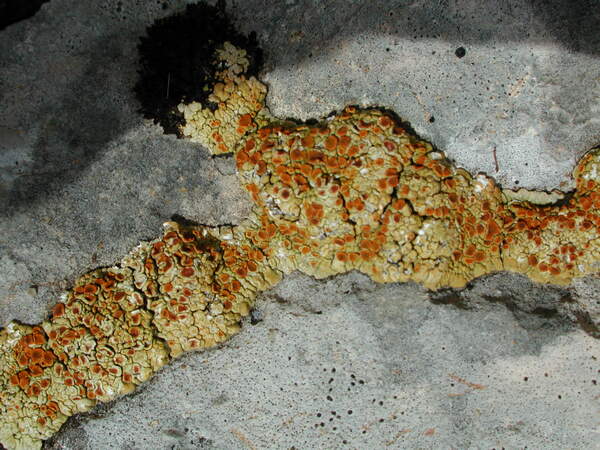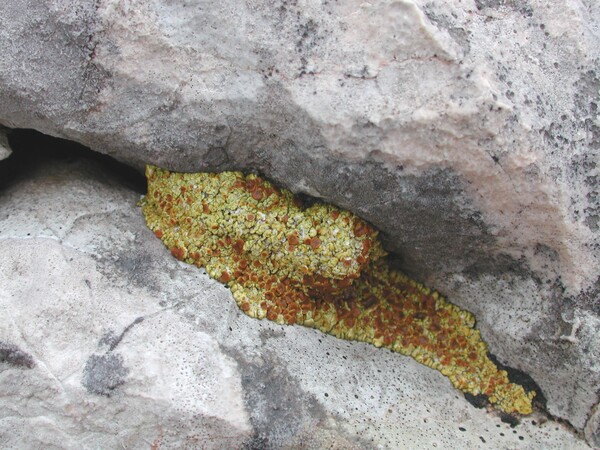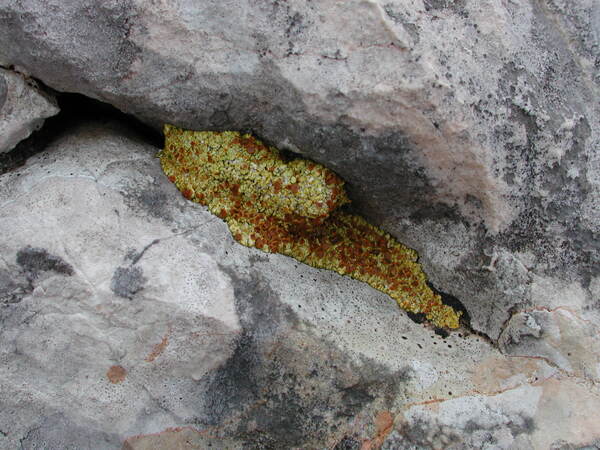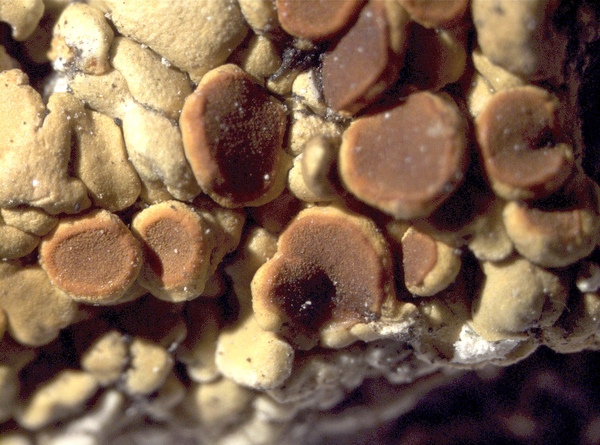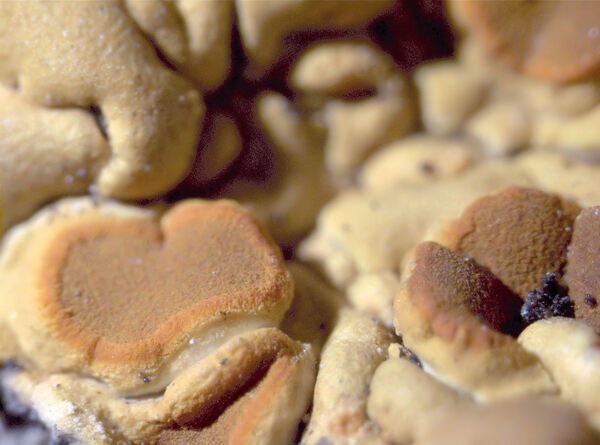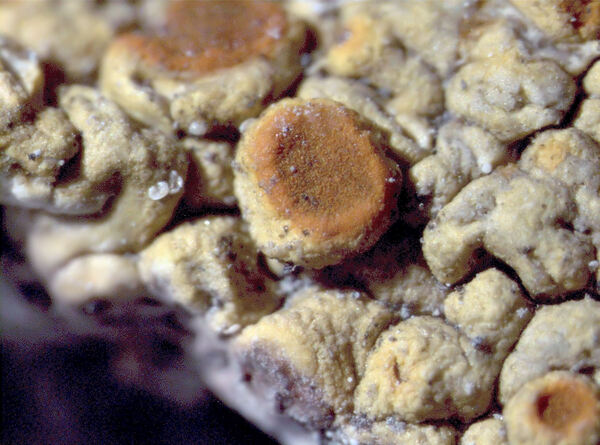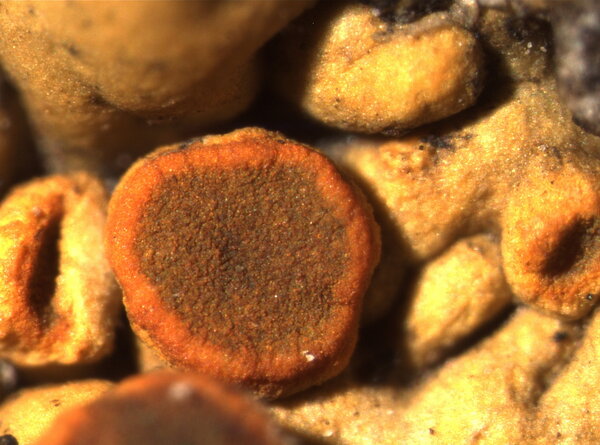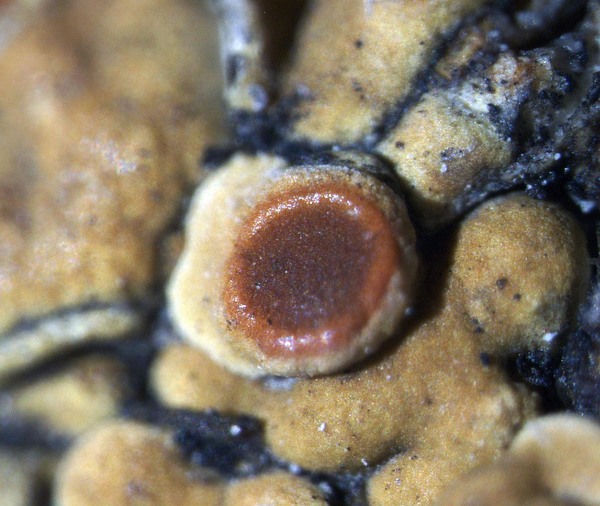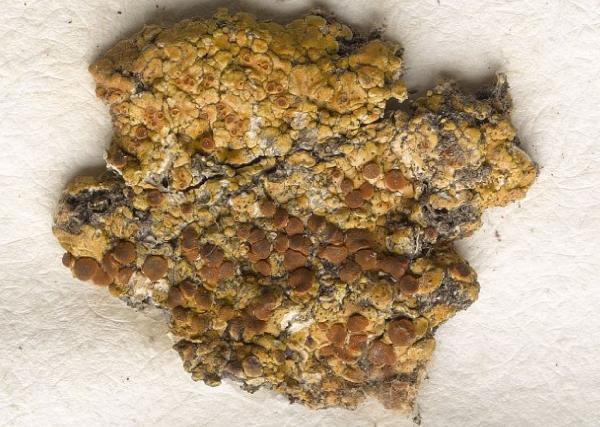Gyalolechia aurea (Schaer.) A. Massal.
Ric. Auton. Lich. Crost.: 17, 1852. Basionym: Lecidea aurea Schaer. - Naturwiss. Anz., 2: 11, 1819.
Synonyms: Caloplaca aurea (Schaer.) Th. Fr.; Candelariopsis aurea (Schaer.) Szatala; Thalloidima aureum (Schaer.) Müll. Arg.
Description: Thallus crustose, episubstratic, areolate, ochraceous yellow to bright orange-yellow, epruinose, thick, forming irregular patches to 4(-6) cm, anchored to thin layers of soil in rock fissures by rhizine-like bundles of hyphae. Areoles 1-2(-3) mm broad, flattened to convex, smooth, contiguous, the marginal ones often elongate, up to 2-3 mm long. Apothecia frequent, zeorine, sessile, slightly constricted at base, 0.5-1.5(-2) mm across, with an orange-brown to olive-brown, flat to slightly convex, rugose disc, and a thick, bright orange to cinnamon-red margin, soon dividing into a paler, thinner proper margin, and a thicker, but often finally excluded thalline margin. Epithecium orange, with a K+ purple-red, granular epipsamma; hymenium colourless, 80-100 µm high; paraphyses mostly simple, not anastomosing; hypothecium colourless. Asci 8-spored, clavate, functionally unitunicate, apically thickened with a broad internal beak, the inner part of apex and external cap I+ blue, Teloschistes-type. Ascospores 2-celled with an open, short (<2 µm) equatorial thickening, hyaline, narrowly ellipsoid to fusiform, constricted in the middle and with pointed ends, 12-20(-25) x 4-7 µm. Pycnidia orange-yellow, immersed. Conidia ellipsoid, 1-celled. Photobiont chlorococcoid. Spot tests: thallus and apothecia K+ red, C-, KC-, P-. Chemistry: fragilin dominant, with smaller amounts of emodin and parietin; physcion present in the apothecia.
Growth form: Crustose
Substrata: soil, terricolous mosses, and plant debris
Photobiont: green algae other than Trentepohlia
Reproductive strategy: mainly sexual
Commonnes-rarity: (info)
Alpine belt: common
Subalpine belt: rather rare
Montane belt: absent
Dry submediterranean belt: absent
Humid submediterranean belt: absent
Padanian area: absent
pH of the substrata:
1 2 3 4 5
Solar irradiation:
1 2 3 4 5
Aridity:
1 2 3 4 5
Eutrophication:
1 2 3 4 5
Poleotolerance:
0 1 2 3
Altitudinal distribution:
1 2 3 4 5 6
Rarity
absent
extremely rare
very rare
rare
rather rare
rather common
common
very common
extremely common
Loading data...
Occurrence data
Predictive map
Growth form: Crustose
Substrata: soil, terricolous mosses, and plant debris
Photobiont: green algae other than Trentepohlia
Reproductive strategy: mainly sexual
Commonnes-rarity: (info)
Alpine belt: common
Subalpine belt: rather rare
Montane belt: absent
Dry submediterranean belt: absent
Humid submediterranean belt: absent
Padanian area: absent
pH of the substrata:
| 1 | 2 | 3 | 4 | 5 |
Solar irradiation:
| 1 | 2 | 3 | 4 | 5 |
Aridity:
| 1 | 2 | 3 | 4 | 5 |
Eutrophication:
| 1 | 2 | 3 | 4 | 5 |
Poleotolerance:
| 0 | 1 | 2 | 3 |
Altitudinal distribution:
| 1 | 2 | 3 | 4 | 5 | 6 |
Rarity
absent
extremely rare
very rare
rare
rather rare
rather common
common
very common
extremely common
Loading data...
Occurrence data
Predictive map


